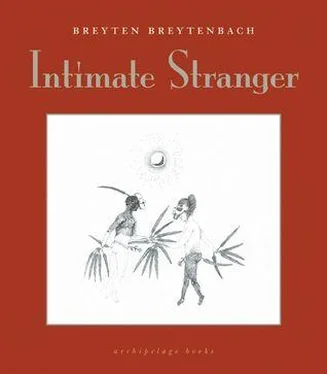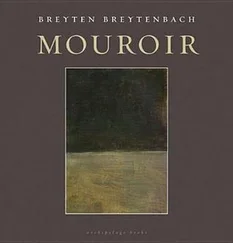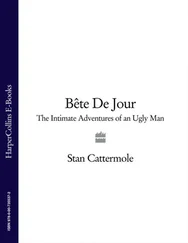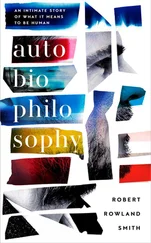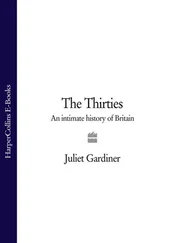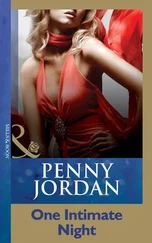Of course, some of us immediately contested the very idea of culture (or rather Culture), arguing that it was certainly not, or not only, an exportation of ‘values’ (such as human rights, secularism, democracy, the celebration of diversity. .) from the privileged Center to the impoverished world, but rather that one should read these as the expression of a given country’s diplomatic policy which cannot be separated from the more overtly rapacious economics and politics pursued by it, as may be witnessed in the ways in which oil companies (for instance) plunder the riches of the third World. The Ogoni people in Nigeria have been disarticulated by the pressure and the exploitation of Shell, an Anglo-Dutch conglomerate, and when Ken Saro Wiwa led a revolt against this humiliating condition he was captured, tried and executed by the Nigerian authorities of the time, working hand in glove with the multi-national. . And oh, the webs of intrigue and complicity (even with ‘the Evil One’), all motivated and justified by profit. There is this story, which cannot be told here, of FBI agent John O’Neill investigating various terrorist attacks on American targets only to find his attempts to prove Bin Laden’s guilt blocked by the US State Department at the behest of the oil lobby making up President Bush’s entourage. The former Soviet republics — Turkmenistan, Uzbekistan, and especially Kazakhstan, also known as “the new Kuwait,” are swollen with oil and gas reserves. Russia will not let the US use their pipelines, Iran is an unpredictable rogue, and that leaves Afghanistan. Chevron, directed right through the 1990s by National Security Advisor Condoleezza Rice, is deeply embedded in Kazakhstan. Unocal in 1995 signed a contract to export $8 billion worth of natural gas through a $3 billion pipeline from Turkmenistan via Afghanistan to Pakistan. The royal house of Saud protects Bin Laden (for as long as he doesn’t attack them, but only infidel American interests), yeah, and Saudi Arabia, without even the beginning of an inkling of that weird mutant process called ‘democracy,’ spawns the narrowest doctrines of fanatic Islamic fundamentalism to be found anywhere and finances their spreading all over the world. But the US will never offend or inconvenience Saudi Arabia. This is called “respecting the Culture of the other.” If ever those turncoat ‘terrorists’ were caught they’d have to be tried and executed by secret military tribunals lest they start spilling unsavory beans in public. After the wild-goose chase an embittered Agent O’Neill, as head of security at the World Trade Center, haplessly but perhaps fortuitously goes to his death under avalanches of rubble and the hellfire of burning jet fuel. Onward Christian so-holdiers. .
Now I’ve gone and told the story anyway.
But this is not what the conference is about. Let’s talk about Culture and Diversity. On the second day, when it was my turn to speak up, I started by explaining how I work at present in the creative writing program of a university in Babylon. My graduate students are of diverse backgrounds — the urban metropolitan jungle, the ghetto, rural hinterlands — but also of distant foreign parts like India and Pakistan and Cambodia and Croatia. This multi-cultural and multi-ethnic environment surely came about ‘naturally,’ shaped only by movements of people and the law of supply and demand. It has a pleasant absence of hegemony or orthodoxy, at least culturally speaking: everybody is different and nobody inferior. However, understanding and accepting and maybe even valorizing our differences will only have a fair chance of being put into practice when together we concentrate on the same discipline of creativeness, in this instance writing. The project and process of expanding consciousness — growing perceptions, transforming ideas into words and words into ideas or dreams, becoming aware of implications and responsibilities — establish a shared space where differences can be appreciated and mediated, where there will be hybridization (even of values, up to a point), but as well an affirmation and recognition of irresolvable specificities. Hybridization gives one another ‘identity’ but does not necessarily resolve or even dilute the constituent parts. We are lucky, I said, to have a circle of activity where we exercise the knowledge of a communal human root and perhaps even similar existential aches.
Now, in this joint creative activity, I found that we deal sooner or later — among other more mundane concerns — and from many different angles, with notions such as the following: what if any are the limits of the permissible and, related, does imagination have a moral content or connotation? In other words, the question of the links between aesthetics and ethics. Is creativity a form of power, or do the arts constitute a non-power in opposition to (and as a subversion of) the power of politics and the market? If non-power is in contrast to power, why is it not then a counter power? Because it doesn’t try and gain adherents or exercise influence, perhaps? The writer and the politician both rely on words, they work the field of perception manipulation — but do they use the same vocabulary? More importantly, how do the purposes of communication differ? Is the one language not dangerously infectious to the other?
Here I used an example. Señora Lourdes Arizpe (who used to be the UNESCO Assistant Director-General for Culture and is now a socio-anthropologist teaching at the National University of Mexico) had said on the first day that, “Politics is the art of the possible.” I propose that art or creativity is, among other things and manifestations, the politics of the impossible — that is, both the dream and the responsible materialization of transgression.
Will power always be corrupting? Or (and I was still talking about notions that emerged in writing class): what is the impact of beauty on reality, if such an antinomy were thinkable? Let us rather ask what the impact of beauty on matter could be. Can we submit that ‘a thing of beauty is a truth forever’? What is beauty? We identified some underlying components: harmony, shape, structure (and are these not synonyms for ‘order’?); texture and color. But also disruption and rupture, jumps and breaks and open ends and inconsistencies. Then we asked ourselves whether these ‘elements’ are valid and operative in all cultures.
Why do we seem to reach for the same forms of exploration, questioning and celebration? What do we do about ‘identity’? Is it just a mask to scare others with?
Is it important? Is it unique? Is it unchangeable or interchangeable? Do we not have several identities up our sleeves, like monkeys, and are some more important than others or is it a question of “horses for courses?” Is memory immutable? Do we have an obligation toward communal memory? Why? How?
Then, for instance, September 11 happened. And we said in class (I told the audience): creative writing is so futile and insignificant — how do we come to terms with happenings which blow our minds, leaving the hollow stench of death beyond the reach of words and imagination? Should we even try? And along similar lines of horror: what do we do now that we live in the shallowing of human intercourse where the only expressions of global species similarity seem to be the propagation and the hallowing of comodification, the reification of consumerism?
I suggested that these reflections, and all the other hollow questions, may come across as abstract or trivial (were we not gathered here to discuss The Global Dimension of Cultural Policy?) but then assured them that they could be translated in concrete writerly concerns. Like: How to use the metaphor as transformative device — indeed, as radical undermining of our simplistic assumptions about ‘reality’; how to grow into the authority or the illusion of what we call voice; how to explore the pleasures of a narrative arc with its pretense at order and control; what to do about the question of language, of belonging or not belonging, of who it is that the writing is intended for. And then that these approaches could be applied to other walks of life as well.
Читать дальше
